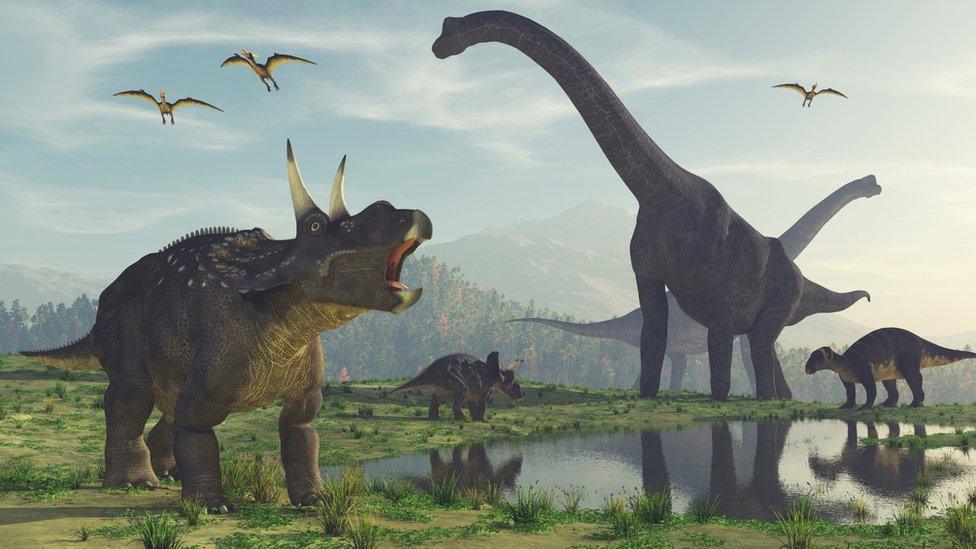Dinosaurs: Scientists discover second asteroid that may have caused extinction
- Published
- comments

Did two separate asteroids cause the extinction of the dinosaurs?
Scientists are investigating whether dinosaurs were wiped off our planet not by one asteroid strike, but by two!
They've discovered a huge new crater below the seabed off the coast of west Africa.
It is of a similar age to the crater in the Gulf of Mexico, caused by the Chicxulub asteroid, that is associated with the extinction of the creatures sixty-six million years ago.
Experts are now looking at whether this new crater was caused by a separate asteroid or whether it came from a chunk that broke off the Chicxulub asteroid.
What did experts find?

Mexico's famous sinkholes, called cenotes, have formed in weakened limestone overlying the Chicxulub asteroid crater
The new crater was identified by experts from Edinburgh's Heriot-Watt University in Scotland.
It's been called the Nadir Crater, and sits more than 300 metres below the seabed, around 400 kilometres off the coast of Guinea in west Africa.
Experts say the crater is over five miles long - which means the asteroid that created it was around 500 metres across!
Dr Uisdean Nicholson from Heriot-Watt University, who discovered the crater said he'd "never seen anything like this" before and added that the shape of the crater suggests it came from an asteroid impact.
"It's got a raised rim surrounding a central uplift area, and then layers of debris that extend outwards," he explained.

Dinosaurs lived on Earth for about over 150 million years before they became extinct
By comparison, the asteroid that created the Chicxulub Crater in the Gulf of Mexico is estimated to have been about 7.5 miles across - around 10 million times greater in size.
As a result scientists say that the effects from a Nadir-sized asteroid would have been much, much smaller.
Planetary Scientist Dr Veronica Bray from the University of Arizona in America, said: "Our simulations suggest this crater was caused by the collision of a 400m-wide asteroid in 500-800m of water."
"This would have generated a tsunami over one kilometre high, as well as an earthquake of Magnitude 6.5 or so," she added.
